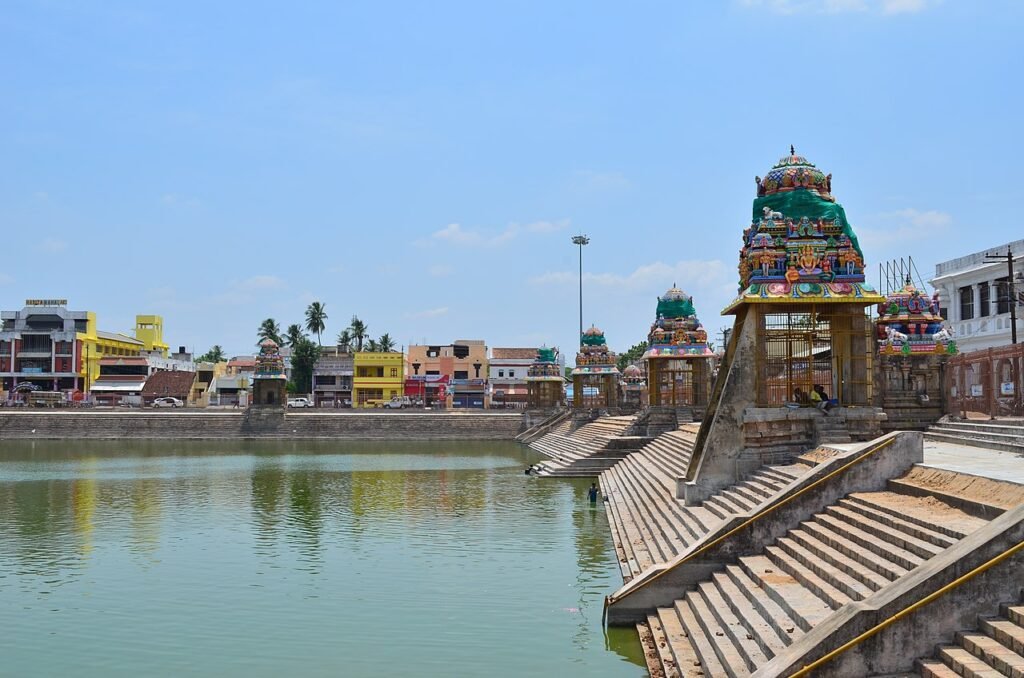Valangaiman

The belief surrounding Mariamman, also known as Mahasakthi or Mother Parasakthi, stems from various narratives attributing her as the one who took away the heat from the world and provided rain to protect life on Earth. Some associate Mariamman with Renuga, the mother of Parasuraman, while others link her to Sakthi, who defeated Marasuran. Additionally, there are connections drawn between the worship of Kannaki and Mariamman. Temples dedicated to Mariamman exist widely, with one notable historical account from Valangaiman Varadharajanpettai, where a child, believed to be Mariamman incarnate, was discovered and later honored with a temple. Festivals, especially in the months of Punguni and Avani, hold significant importance at the temple, with special rituals, religious lectures, and cultural events conducted to honor the Goddess and receive her blessings. Notably, the floating festival of the Goddess in the last Sunday of Avani marks a highlight of the temple’s annual celebrations.
Patteswaram
Patteeswaram Temple, located 6km from Kumbakonam, holds a rich historical and religious significance. Tirugnana Sambandar’s visit to the temple, where Lord Shiva provided shade from the oppressive heat, is revered. The temple is known for its unique depiction of Mother Durga with eight hands, symbolizing various attributes. It was a significant site for Chola kings, who worshipped Durga before important decisions and wars. Gnanasambandar’s encounter with Lord Shiva, who provided a pearl umbrella to shield him from the sun, is celebrated annually. The name “Patteeswaram” originates from the daughter of Kamadhenu, who worshipped Lord Shiva here, leading to the temple’s establishment. The serene form of Durga here, seated on a lion, differs from traditional depictions, and the temple is adorned with Nayakkar and Maratha period artwork. It’s a revered site attracting devotees seeking blessings from the all-powerful Durga.
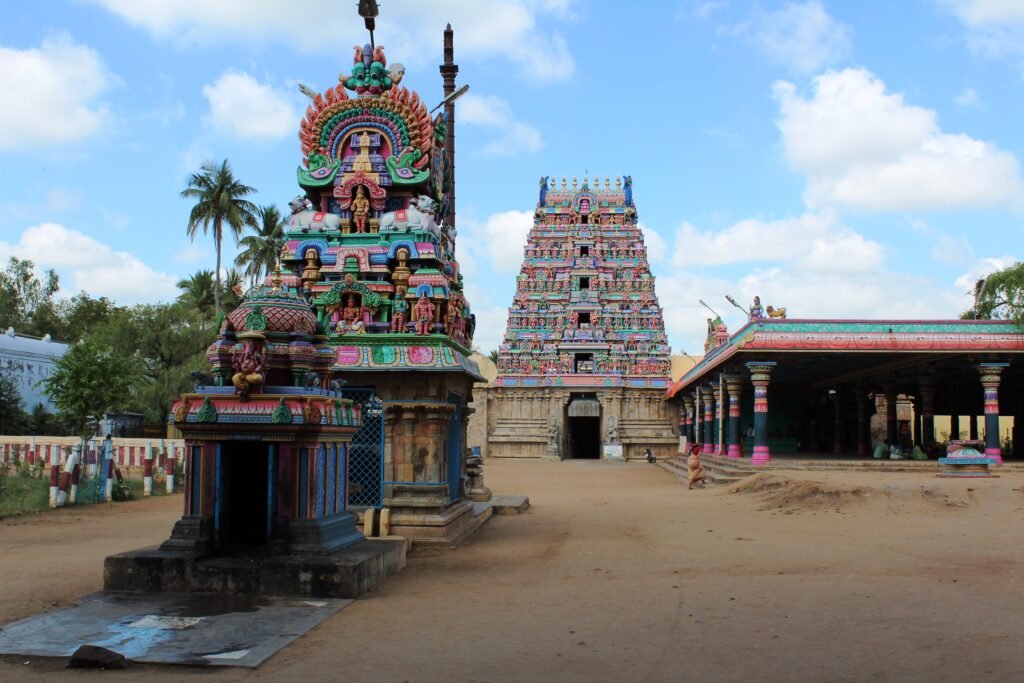
Thirukadayur

Thirukadayur Temple is renowned for its significance in various life ceremonies and astrological remedies. Devotees flock from all over India and abroad for special pujas marking significant life events like birthdays, anniversaries, and relief from planetary afflictions. Abirami Amman, the presiding deity, is believed to grant blessings for prosperity, marriage, children, and wisdom. Rituals such as Angapadhikshanam, offering of garlands, and adoption of children are common among devotees seeking divine intervention. The temple is also known for its unique customs like the use of Jathi Malli flowers exclusively for God and the absence of Rahu effects. Legends recount instances of divine intervention, including Lord Shiva defeating Yama, the God of Death, leading to the temple’s reputation as an Attaveerattasthalam. Festivals like Yama Samharam and 1008 Sankabishekam are celebrated with great fervor, attracting devotees year-round. The temple’s history is rich with stories of penance, divine boons, and miraculous occurrences, making it a revered site for spiritual seekers.
Thiruveezhimizhalai
Thiruveezhimizhalai Temple is dedicated to Swami Veezhinathar and Ambal Brihatsundarakuchamba, also known as Azhagiyavanmulaiammai or Kathyayani. Legend has it that Parvati, reborn as Katyayani, married Shiva here. Vishnu received Chakrayudam from Shiva, and in an act of devotion, offered his own eye as a lotus flower during worship. The temple is renowned as a “Marriage Sthala,” with a special deity known as “Mappilai Swamy” representing Swami and Ambal in bridal form. Appar and Sambandar were blessed with gold coins daily during a severe drought, which they used to feed the needy. The temple is a significant pilgrimage site, revered by devotees and praised by all three saints—Appar, Sundarar, and Sambandar. Located near Nachiarkoil, the temple boasts unique features and is recommended for a morning visit.
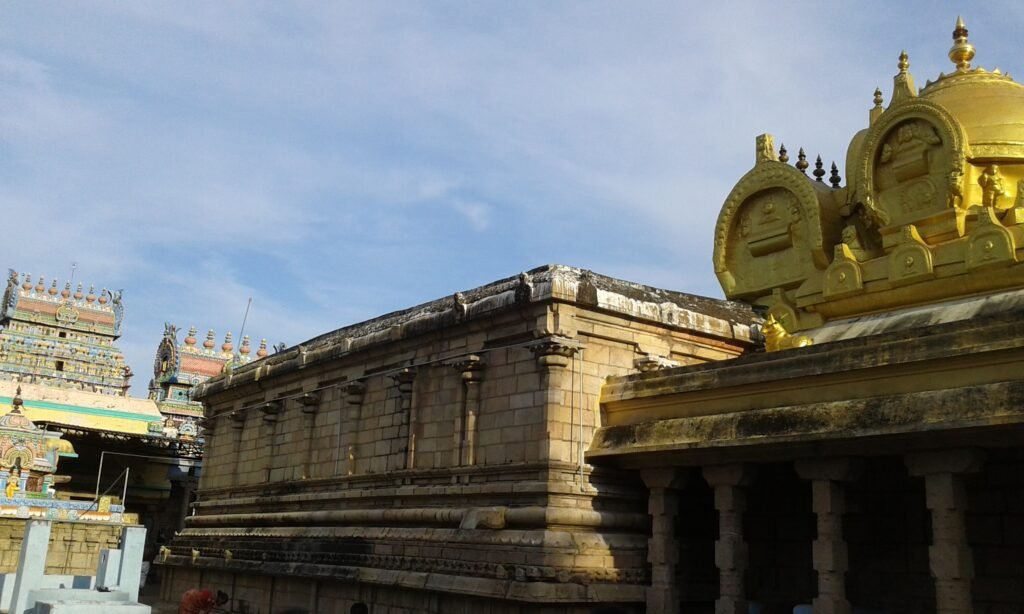
Thirumananjeri
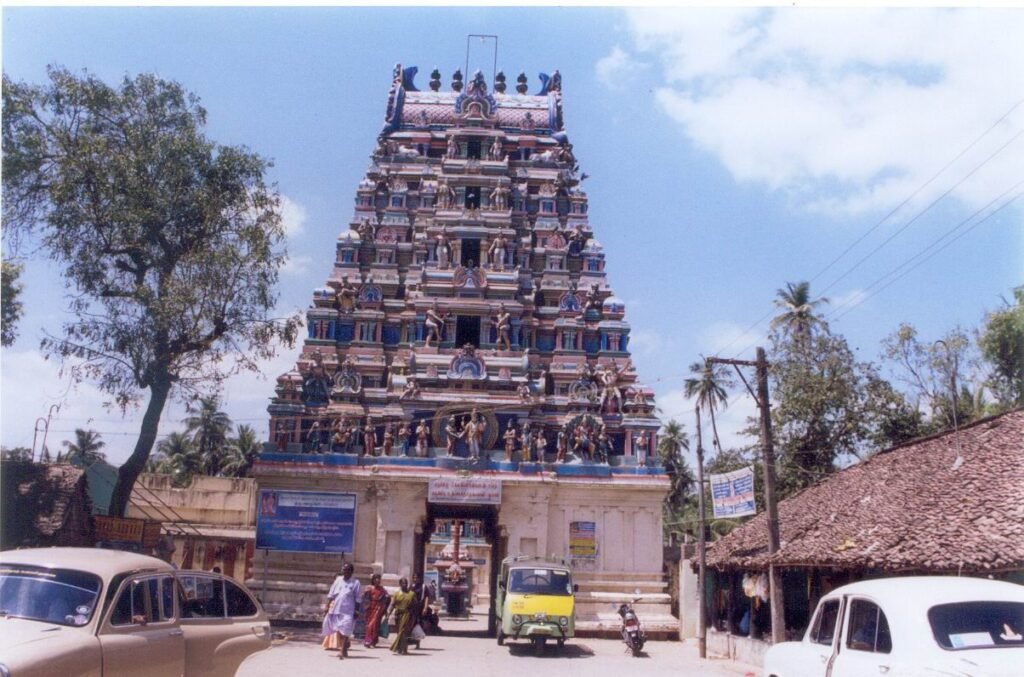
Thirumananjeri Temple is a revered site for marriage prayers, believed to facilitate the union of unmarried individuals. The Arulmigu Abathsagayeswarar temple in Alangudi is dedicated to Lord Guru Bhagavan, representing Jupiter. The temple offers rituals for various deities and follows specific procedures for marriage ceremonies and daily poojas. Thirumananjeri has historical significance, being associated with the divine marriage of Shiva and Parvathi. It’s part of a pilgrimage route and offers essential tips for visitors. Overall, both temples hold spiritual importance, especially for marriage-related prayers and planetary influences.
Tiruppanandal
Tiruppanandal Temple, also known as Taalavanam, is an Upadesa Stalam with Shiva facing west and Ambal facing east. It is the 39th temple in the series of Tevara Stalams located in Chola Nadu north of the river Kaveri. Legends associate the temple with Shiva allowing an anxious devotee to adorn him with a garland and absolving Brahma of a false declaration. The temple features lofty fortress walls, towering Rajagopurams, and a Vimanam crowned with three kalasams. Raja Raja Chola II made significant grants to the temple, and it is associated with the devout Kungiliyakkalaya Nayanar. The shrine is under the administration of the Dharumapura Adhinam, offering six worship services daily.

Ayyavadi

The Sri Maha Prathyangira Devi temple, situated in Ayyavadi, a village approximately 6 kilometers from Kumbakonam, Tamil Nadu, holds significant mythological importance. Legend has it that the five Pandavas visited this sacred place, worshipping Sri Maha Prathyangira Devi and leaving their weapons under a tree before venturing into the surrounding forests. This act led to the village being known as Aivar Padi, later transformed into Ayyavadi.
The temple is closely associated with the divine intervention of Lord Shiva in his formidable Sarabeswara form, accompanied by Sri Mahaprathyangira Devi. This divine manifestation occurred when Lord Vishnu, in his Narasimha Avatar, slew the demon king Hiranyakasipu, but his fierce rage continued unabated, causing distress to all beings. Seeking relief from Narasimha’s uncontrollable fury, people prayed to Lord Shiva, who assumed the powerful Sarabeswara form, with Sri Mahaprathyangira Devi adorning one of his wings. Together, they pacified Narasimha’s rage, restoring peace and balance.
In another tale from the Ramayana, Indrajit, Ravana’s son, performed a Yaga known as “Nigumbalai Yagam” to worship Sri Maha Prathyangira Devi, seeking divine powers to defeat Lord Rama. However, the Yaga was thwarted by Lakshmana and Hanuman before completion. Sri Maha Prathyangira Devi is depicted in the temple seated on a chariot adorned with four lions and eight arms wielding various weapons, including a lion’s face.
Thirubhuvanam

The Sri Sarabeswara Temple is revered by devotees for its role in overcoming various challenges such as obstacles in marriage, childbirth, debts, legal battles, and black magic. Legend has it that Lord Shiva assumed the form of Sarabeswara to pacify Narasimha’s unrelenting anger and prevent the spread of asura blood. The temple, constructed in the Chola style by Kulothunga Chola III, features intricate architecture, including separate shrines for Lord Sarabeswara and other deities like Kambahareswarar and Dharmasamvardhini. Daily rituals and festivals are conducted, including special pujas during Rahukaalam and Saraba homam for devotees. The temple’s annual festival, celebrated on Pankuni Uthiram day, involves laksharchanai and ekadhina laksharchanai rituals. Devotees often engage in prayers, lighting lamps, or performing pradakshanams for 11 weeks as a form of worship.
Darasuram
The Sri Sarabeswara Temple is revered by devotees for its role in overcoming various challenges such as obstacles in marriage, childbirth, debts, legal battles, and black magic. Legend has it that Lord Shiva assumed the form of Sarabeswara to pacify Narasimha’s unrelenting anger and prevent the spread of asura blood. The temple, constructed in the Chola style by Kulothunga Chola III, features intricate architecture, including separate shrines for Lord Sarabeswara and other deities like Kambahareswarar and Dharmasamvardhini. Daily rituals and festivals are conducted, including special pujas during Rahukaalam and Saraba homam for devotees. The temple’s annual festival, celebrated on Pankuni Uthiram day, involves laksharchanai and ekadhina laksharchanai rituals. Devotees often engage in prayers, lighting lamps, or performing pradakshanams for 11 weeks as a form of worship.

Tiruvaiyaru

The Tiruvaiyaru Temple, the 51st in the Tevara Stalams series, holds rich legends and historical significance. Devotees believe that Shiva saved Sucharitan from death and granted Agasthyar his dwarfed stature here. The temple boasts several inscriptions from various rulers, including Rajaraja Cholan’s wife’s contributions to its construction and renovation. Architecturally, it features five prakarams, a seven-tiered Rajagopuram, and shrines dedicated to Somaskandar and Sivayoga Dakshinamurthy. Festivals like Tirukkalyanam and Brahmmotsavam are celebrated with fervor, attracting devotees from far and wide. The temple’s serene ambiance, along with its spiritual aura, makes it a revered destination for devotees seeking solace and blessings from the divine.
Mannargudi
The temple, spread over six square acres, boasts seven circumambulatory paths and sixteen majestic towers, including the towering Rajagopuram reaching up to 154 feet. Notable features include spacious halls like Vallala Maharaja Mandapam and Garuda Vahana Mandapam, along with twenty-four shrines dedicated to various deities. Legends suggest that the temple’s orientation might have changed over time, with historical remnants hinting at past grandeur. Intricate carvings and sculptures adorn the temple, reflecting the Nayak period’s artistic finesse. Festivals like Vaikuntha Ekadasi witness elaborate ceremonies, attracting devotees from afar. The temple’s serene ambiance and architectural grandeur make it a cherished destination for spiritual seekers and art enthusiasts alike.
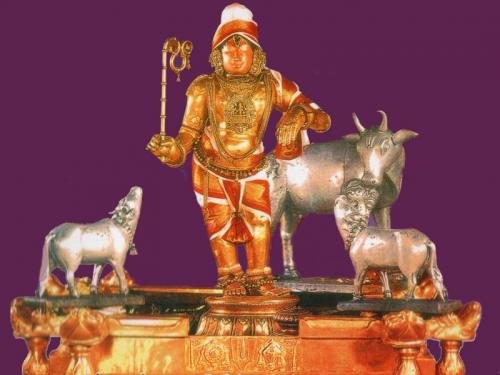
Gangaikondacholesvaram

Gangaikondacholapuram, established as the capital of the Chola dynasty by Rajendra I, boasts a magnificent temple dedicated to Lord Shiva. The temple’s Srivimana, with its octagonal structure, stands as a testament to Chola architecture, surpassing even the renowned Brihadisvara temple in Thanjavur in sculptural quality. Renovated by the Archaeological Survey of India, the temple’s beauty lies in its intricate sculptures, including depictions of deities like Laxmi, Saraswathi, and Ardhanareeswarar. The temple hosts various shrines, with special pujas conducted regularly, including the grand Annaabishegam festival, where the lingam is adorned with rice. The temple, under the management of ASI and HR&CE, is a historical and architectural marvel, drawing visitors from far and wide. Additionally, the remnants of the Rajendra Chola Palace at Maalikai Medu offer insights into Chola-era grandeur, preserved as a protected monument by the Tamil Nadu Archaeological Survey.
Adi Kumbeshwara temple
The Adi Kumbeswarar Temple in Kumbakonam is a significant ancient Shiva temple, revered for its size, age, and architectural beauty. Built by the Chola king and later renovated by the Nayak king, it features a towering 128-feet high gopuram adorned with intricate carvings. Legend has it that the temple’s origin is linked to a divine event during the “Mahapralaya,” where Lord Shiva broke a pot of nectar, leading to the formation of the Mahamaham Tank. The temple hosts the Mahamagam festival once every 12 years. Notable features include a Navaratri Mandapam with carved zodiac signs, a Kalyana Mandapam for ceremonies, and stone nadaswarams. Dedicated to Lord Kumbeshwara and Goddess Mangalambigai, with other deities like Subramanya and Vinayaka also worshipped, the temple remains a revered center of Shaivite worship and architectural grandeur, drawing devotees and visitors alike. Contributions from Govinda Dikshitar, a minister to Nayaka rulers, played a crucial role in the temple’s renovation and upkeep, reflecting his legacy of charitable endeavors.
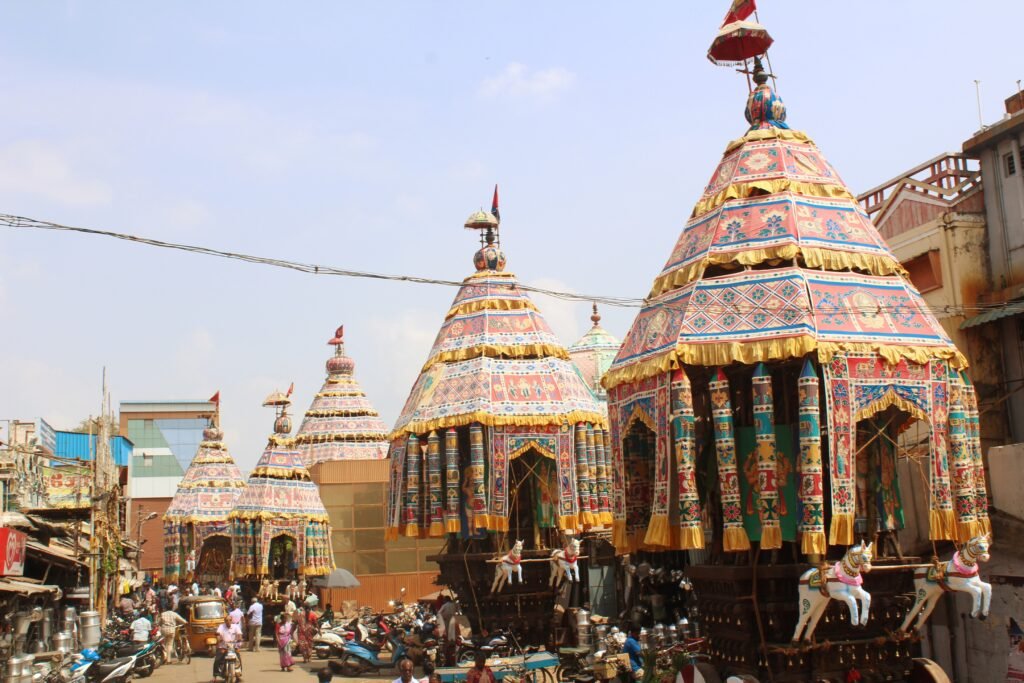
Ramaswamy Temple
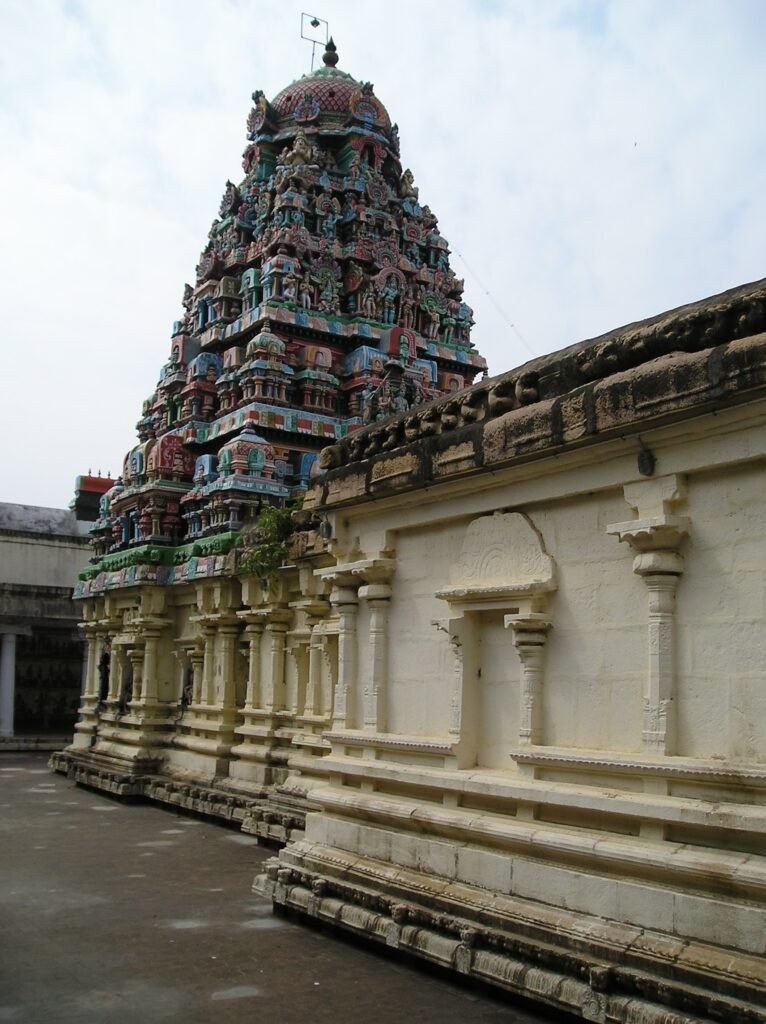
The Ramaswamy Temple in Kumbakonam is renowned for its unique depiction of Lord Rama and Sita in a coronation posture, flanked by Lakshmana, Bharatha, and Shatrughna, with Hanuman playing the veena nearby. Built during the reign of King Raghunayak, the temple showcases exquisite pillars and murals depicting scenes from the Ramayana. Legend has it that icons of Rama and Sita were discovered during the excavation of a holy tank, leading to the temple’s construction. The temple’s grandeur, adorned with a towering gopuram, attracts devotees and art enthusiasts alike. Dedicated shrines for Srinivasa, Sreedevi, Bhoodevi, Azhwars, and acharyas add to its spiritual ambiance. With its divine atmosphere and majestic architecture, the Ramaswamy Temple remains a cherished destination for worshippers and visitors alike.
Nageswaran Temple
The Nageswara Swami Temple in Kumbakonam is an ancient and remarkable structure, believed to have been completed during the reign of Parantaka I (907-c.940) of the Chola dynasty. Dedicated to Lord Shiva in the form of Nagaraja (the serpent king), the temple is renowned for its exquisite architecture and sculpture. Aditya Chola constructed the temple during the 12th century, and it stands as a marvel of Chola architecture, building technology, and astronomy. The temple’s design allows sunlight inside only during the Tamil month of Chithirai (April/May), earning it the name Surya Kottam or Keel Kottam. The main shrine features sculptures of significant deities, including Dakshinamurti, Ardhanarishvara, and Brahma. The temple courtyard houses a shrine to Nataraja, adorned with rearing horses and wheels. Notably, the sun’s rays illuminate the lingam in the central shrine through an opening in the eastern tower for three days a year during the month of Chithirai.
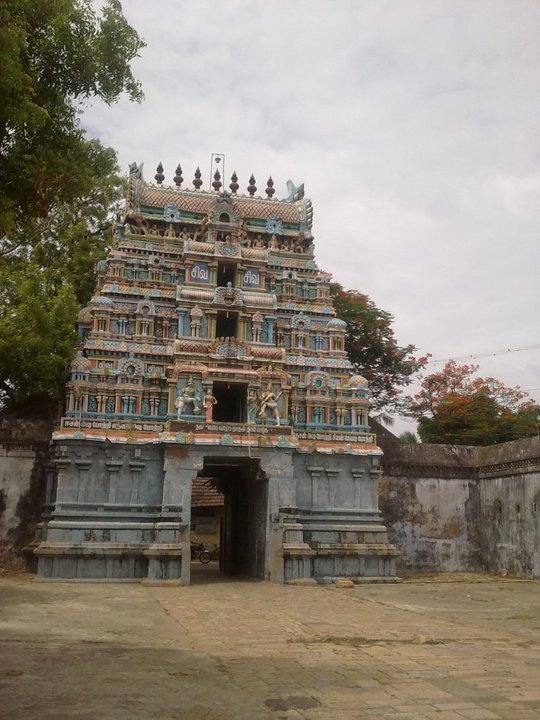
Kasi Viswanathar Temple
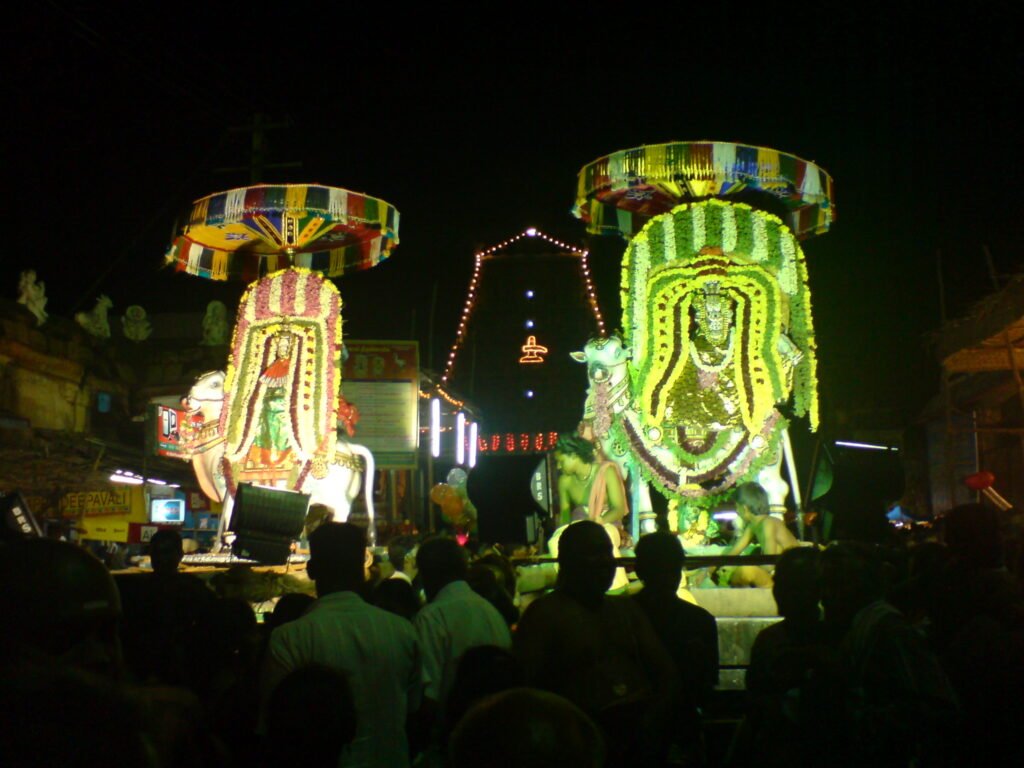
About Temple: This temple is very close to the Mahamagham tank, and the lingam here is a swayambhu. The importance of this temple is the belief that it is here that the Nava Kannigais(nine maidens representing the nine rivers – Ganga, Yamuna, Saraswati, Kaveri, Godavari, Narmada, Krishna, Tungabhadra and Sarayu) arrive to bathe in the Mahamagham tank once every 12 years.
The interesting thing about this temple is the presence of a sanctum dedicated to the Nava Kannigais, as soon as we enter the temple.
Here, it is believed, one must first offer one’s respects to them before going on to pray to the main deity Kasi Viswanathar and his consort Visalakshi.
Chakarapani Temple
The Chakrapani Temple in Kumbakonam is dedicated to Chakrathazhwar, also known as Chakrapani, who symbolizes Mahavishnu and adorns the Sri Chakra in his right hand. Legend has it that Sri Chakra emerged from the river Cauvery and was consecrated by Brahma at the temple’s location. The temple’s genesis is rooted in Mahavishnu’s dispatching of Sri Chakra to defeat the demon Jalantharasuran. The temple’s eastern and western entrances are known as “Thatchinaya Vayil” and “Utharavana Vayil” respectively, with the outer Prakara constructed in the form of a balcony. Notably, Surya, the sun god, once competed with Vishnu but was humbled by the radiant power of Sri Chakra. In surrender, Surya requested that the hallowed spot be named Bhaskara kshetram after him. The temple is revered as one of the most significant Vishnu temples in South India, and seven of the Alwars have sung its praises. The temple’s images of Chakrapani with eight arms and Sudarshanavalli Thayar are inspiring, with Brahma, Surya, and Agni depicted as worshipping the Lord.
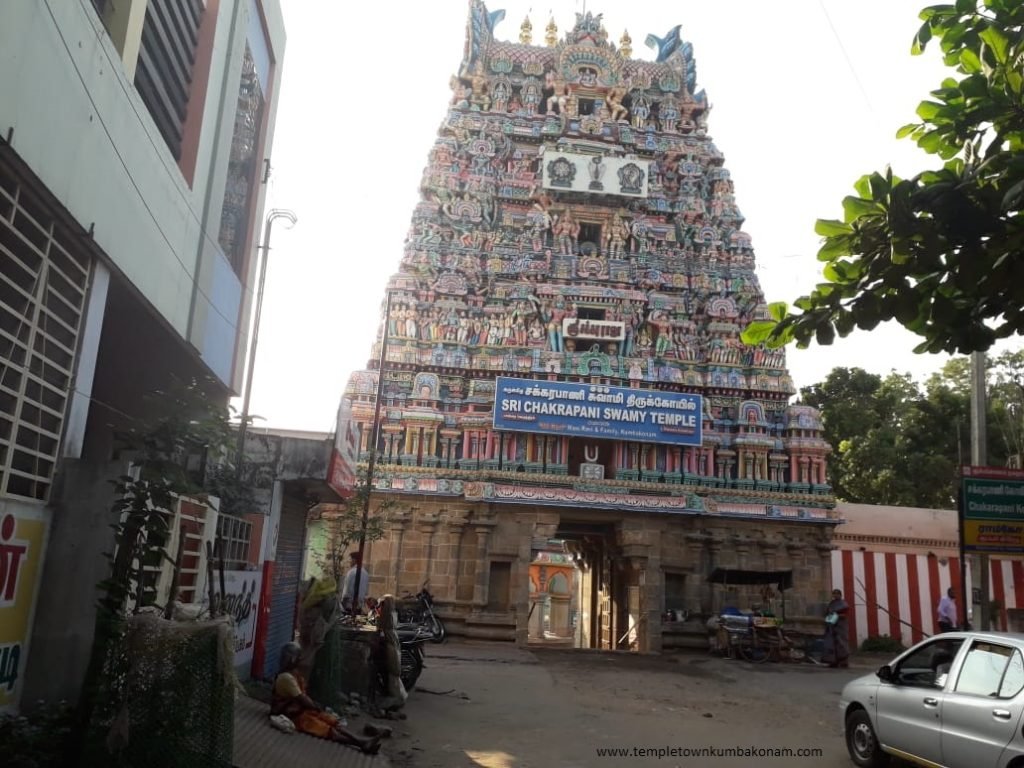
Mahamaham Tank
The Mahamaham festival is celebrated every 12 years in Kumbakonam, Tamil Nadu, during the full moon of the Tamil month of Maasi (February-March). Hindus consider bathing in the Mahamaham tank on this auspicious day as sacred, believing it cleanses them of sins. The festival occurs when specific astrological conditions align, and it attracts thousands of devotees who bathe in the tank’s waters, believed to contain the essence of 20 holy rivers. Each of the tank’s wells represents a sacred river, offering specific blessings like moksham, prosperity, and mental peace. The tank is surrounded by 16 Mandapas representing forms of Lord Shiva. The festival also involves processions of deities from prominent temples and is considered even more sacred than Varanasi (Kasi) by some. Legend has it that the earth was created at the site of the Mahamaham tank, giving rise to the name “Kumbakonam,” meaning “Pot Toppled” in Tamil.
